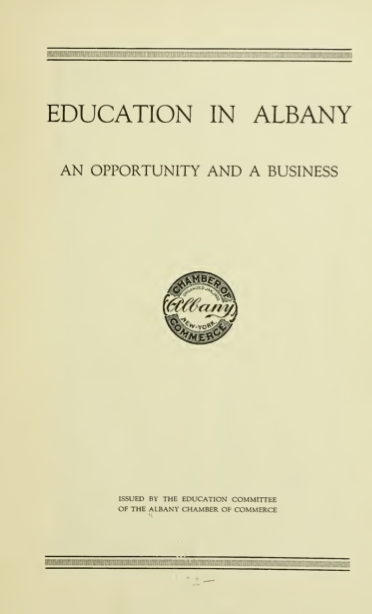
In 1923, the Albany Chamber of Commerce put out a booklet promoting “Education in Albany: An Opportunity and a Business.”
“What educational opportunity will be possible for my children?” the booklet asked. “This is the most important question a man asks who is seeking a home. Albany answers this question with a completeness hardly realized even by her own residents. It is possible for a child to spend seventeen years here in regular public school courses – kindergarten one year, grades eight years, high school four years, and State College four years. That is, this city says to the prospective resident, ‘Here your child may be taken at five years of age, trained for seventeen years without expense to you and at a total cost of $1258.79 to the city and $1000 to the state, according to the present budget, a total gift of $2258.79.’”
That wasn’t even the full extent of educational opportunities in Albany a century ago, of course. There were private and parochial schools. In the public schools, special classes were provided for the “mentally retarded, for the anemic, tuberculous and deaf and for those of poor vision.” There was a vocational school and a continuation school that cared for “one thousand working girls and boys by giving them the type of education for which they are best fitted, – mechanical, commercial or domestic arts.”
In addition, there were evening classes, with 2150 students in the previous year, ranging from “first English for the foreigners who wish to learn our language” to advanced science and mathematics.

Leave a Reply